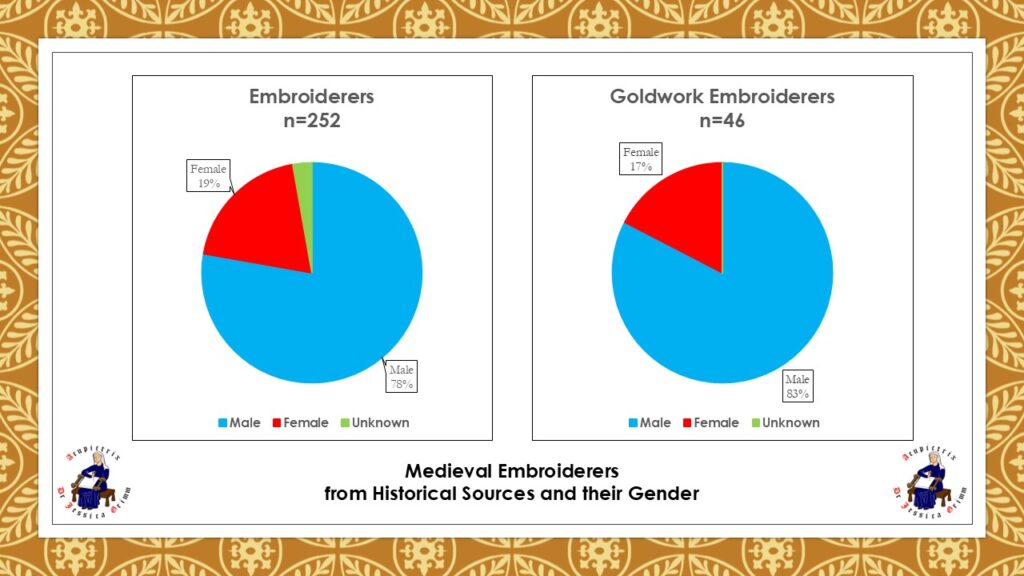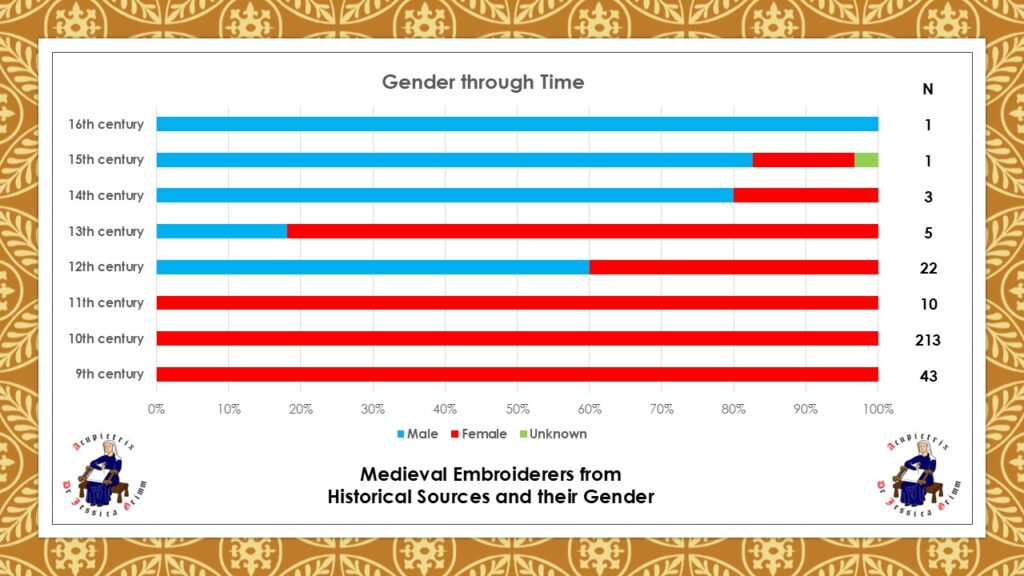Over the years, I have come across the names of hundreds of medieval embroiderers. A couple of names can often be found in papers on medieval embroidered textiles. Sometimes, a whole list is provided, for instance, of those people who worked on embroidered textiles for Duke Philip the Good in AD 1425. Or we have a nice paper on a particular embroiderer and his conduct. Analysing the development of the embroidery trade through surviving guild regulations is also a good source of names. Each of these instances is anecdotal. As far as I know, there isn’t a central database which lists the personal details of medieval embroiderers from Europe. That can be easily changed! From now on, I will maintain an Excel list. The list will be accessible through this blog (easily found through the ‘medieval embroiderers’ category). Although I have gathered an impressive 298 names, my list is far from complete. Please contact me if you want to see names added to the list. My cut-off point is AD 1550-ish. Curious if someone with your (sur) name is on the list? Let’s find out!

So far, I have been able to find embroiderers from as early as the 9th century and for each subsequent century right up to the mid-16th century, which is where my cut-off point is. They come from sources in Austria, Belgium, England, France, Germany, Italy, the Netherlands, Poland and Sweden. The further back in time we go, the less information we have. As you probably feared, most of the embroiderers who made it into the written record were male. Of only 46 medieval embroiderers, I can be certain they worked with gold threads. Interestingly, the male:female ratio still holds. This does not mean that women did not embroider professionally. It does mean that they were not as often in a position that needed for their names to be written down as embroidering men were.

As soon as we split the available data into the appropriate centuries, a slightly different picture emerges. Although based on very small numbers, the data probably hints at a change in society. Professional embroidery was probably done predominantly by women in the early Middle Ages before men entered the field in the high Middle Ages. However, the data for the early Middle Ages comes predominantly from England. Thus, what we observe might result from geographical differences and not be applicable to all of medieval Europe.
Those who would like to investigate and/or play with the raw data can download my Excel file by clicking on the above download button. Enjoy!
